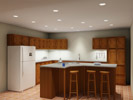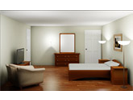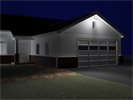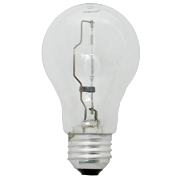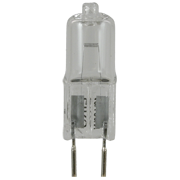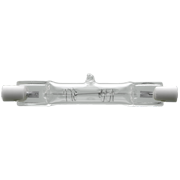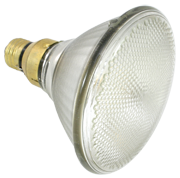
Incandescent: Halogen
Due to the addition of halogen gas and in some products a coating that reflects infrared energy, halogen incandescent bulbs are somewhat more efficacious (the amount of light produced per unit of input power) than common incandescent bulbs. However, halogen bulbs offer significantly lower efficacy and shorter life than fluorescent and LED bulbs. Restrict their use to applications where short hours of use are expected, or where there are no other alternatives.
Some halogen bulbs have a pin base (bi-pin). Halogen bi-pin bulbs only fit into fixtures designed exclusively for their use. Halogen screw base bulbs fit into the same medium-based sockets as common incandescent bulbs.
Halogen bulbs have an inner capsule that contains halogen gas, which extends bulb life. Halogen infrared (IR) bulbs also have a reflective coating to redirect infrared energy back onto the filament to save energy. Most halogen bulbs use about one-quarter less energy than the standard incandescent, but recently some halogen lamps have entered the market that use half the energy of standard incandescents.
Tube-shaped halogen bulbs (J-type) are made of quartz glass to withstand high operating temperatures. They may be double or single ended and are available in a variety of lengths and wattage. Because of their high operating temperatures and unique bases, thermal control and socket design within the fixture are important. do not touch J-type bulbs with bare hands because high temperatures may crack the quartz bulb if it has been etched with oils from hands and fingers. The bulbs must be protected by a glass cover in the fixture to prevent potential damage from bulb rupture.
Cautions
- Halogen bulbs become very hot. Keep combustible materials away from the bulb and avoid touching while in use.
- Halogen bi-pin and J bulbs can burst, and therefore, should be used in a fully enclosed fixture to provide shielding. In addition, the bulbs produce ultraviolet radiation that may be harmful if light is not first absorbed or filtered by a glass shield.
- Halogen bulbs can be dimmed, but occasionally they should be operated at full light output to retain long life.
Example Patterns
